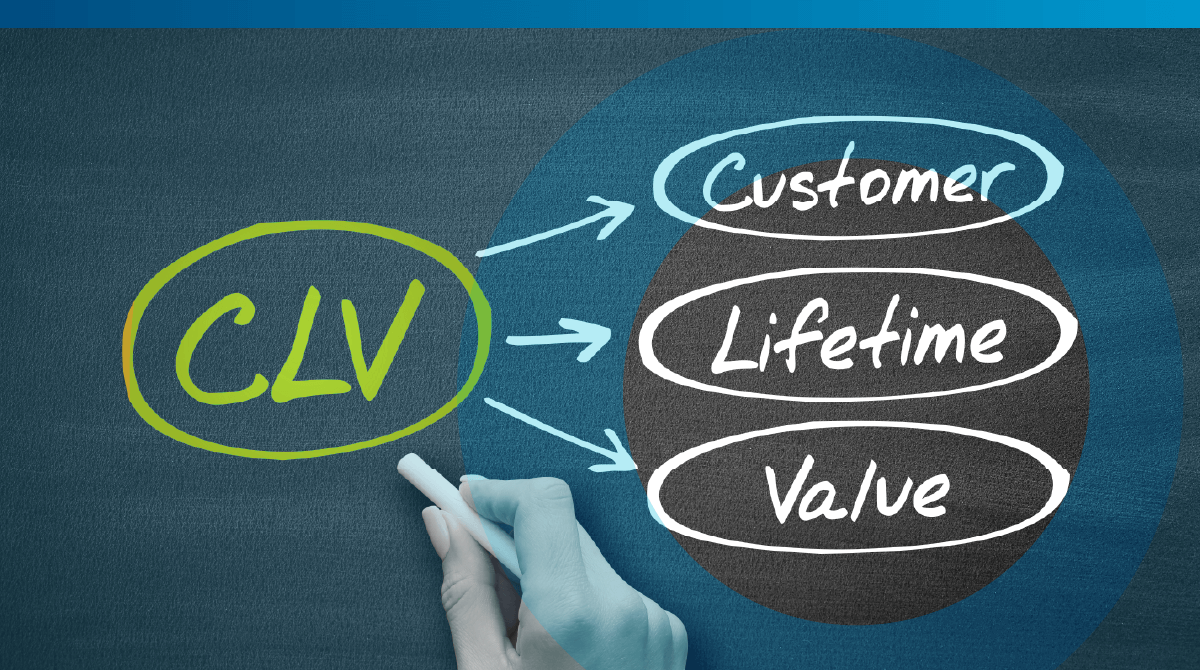There’s a reason Dan Martell and other marketing masters have been touting SaaS metrics like customer lifetime value. While such statistics might seem vague or meaningless, they can have a massive impact on how you handle your marketing.
That's why Dan recommends using a proven SaaS Metrics Template to track your company's metrics when planning for the future.
Everyone knows that customers are valuable, but it’s best to know exactly how much value a customer will bring during their relationship with your company. Once you understand the value of your existing customers, you’ll know how much to spend on adding new customers and growing your customer base.
What Is Customer Lifetime Value?
Customer lifetime value is a measure of how much your average customer will spend during their entire time dealing with your company. SaaS companies often use this metric to inform their general marketing strategies. If your SaaS business needs more data around customer acquisition, then calculating the value of each customer is an excellent place to start.
What Is the Difference Between LTV and CLV?
While LTV (lifetime value) and CLV (customer lifetime value, sometimes abbreviated as CLTV) are both important metrics, they’re slightly different from each other. LTV is an aggregate measure meant to understand the total value offered by all the customers within a company.
CLV or CLTV, on the other hand, gives you the lifetime value of each individual customer. Knowing how much value your average customer provides can be useful for allocating resources, determining benchmarks, and investing in marketing strategies that boost customer retention.
How to Calculate LTV
There are a few different ways to calculate customer lifetime value. Each LTV calculation method requires different variables, so make sure you have all your customer data handy before you start the process.
1. For the simplest method, you’ll need three pieces of information. First of all, you need the average purchase value, or the amount of money each customer typically spends at a time. You can find this by dividing your revenue during a period of time by the number of purchases made during that period. You’ll also need the average purchase rate, or the number of purchases that each customer typically makes. Finally, you’ll need the average customer lifetime, or the number of years that the average customer makes purchases from your company. If you multiply these three figures, you’ll end up with an approximation of your CLTV.
2. A slightly more involved LTV formula will give you more exact results. First, you need to find the average revenue per account (ARPA) by dividing your monthly recurring revenue (MRR) by the number of accounts. Alternatively, you could find the average revenue per user (ARPU) by dividing your MRR by the number of users, a figure which can be slightly different from your ARPA if some users have multiple accounts. Once you have the ARPA or ARPU, you can simply multiply it by the average customer lifetime to find your CLTV. Alternatively, you could divide the ARPA or APRU by your customer churn rate, or the number of customers lost during a specific period of time.
3. A final method requires knowing your ARPA, your revenue churn rate, and your gross margin percentage. You can calculate your revenue churn rate by dividing your revenue lost or gained during a specific time period by your revenue at the start of the period. To find your gross margin percentage, start by subtracting your cost of goods from your revenue. Then, divide this total by your revenue and multiply it by 100. To calculate customer LTV, take this gross margin percentage, multiply it by your ARPA, and divide the product by your revenue churn rate.
All three of these methods should give you a similar number. Once you know how much value a single customer brings during their relationship with your company, you can use the total to devise a reasonable marketing strategy.
Why Is LTV Important for SaaS?
Whether you’re running a startup or a legacy company, LTV is a vital metric. Once you understand what your company gains from each new SaaS customer, you can decide which customer acquisition programs are truly worth the cost.
Every marketing team should endeavour to calculate customer acquisition cost (CAC). This is the metric that tells you how much money you need to spend on marketing to acquire a new customer. Not only is this a useful measure itself, but it can also combine with your CLTV to provide further insights.
By comparing CLTV to CAC, you can calculate your CAC ratio. This number shows you how much value you’re getting from the money you’re investing in customer acquisition. Imagine, for example, that your CLTV is $9,000, meaning that your average customer spends $9,000 during their relationship with your company. Your CAC, meanwhile, is $3,000, meaning that you spend an average of $3,000 to acquire each new customer. Your CAC ratio, therefore, would be 3:1, which is widely considered ideal.
If your CAC ratio is higher than 3:1, it probably means you’re not spending enough on customer acquisition. Considering the high value of each individual customer, you should probably invest more in marketing schemes that could help you maximize your product’s potential and grow your customer base. If your CAC ratio is below 3:1, you’re probably spending too much on customer acquisition. For all the money you invest in marketing, you’re not getting sufficient value in return. With the right business model, you can adjust your CAC ratio over time, eventually succeeding in developing a 3:1 ratio.
How to Increase Customer Lifetime Value
Increasing your CLTV is a great way to boost your company’s profits. While adding new customers is always an important part of a successful business model, you should also be doing what you can to inspire existing customers to pay more. With a three-pronged approach to sales, you can get each of your customers to spend more with your company.
Push for Bigger Order Values
One of the best ways to increase the value of each individual customer is by pushing for larger order values. Imagine, for example, that you’re a SaaS startup selling several types of software. Most of your customers might buy just a single software product at a time, keeping their lifetime value relatively low. If you can get them to buy multiple types of software with each order, they’ll become much more valuable.
There are a couple of ways to do this. By marketing products heavily to existing customers, you can encourage them to diversify their purchases. You should also design your website so that customers are constantly receiving additional recommendations. Eventually, these tactics will produce a notable increase in the value of the average order.
Stimulate More Frequent Orders
Not only do you want customers to place more valuable orders, but you also want them to place orders more often. If your existing customers are constantly coming back for more, they’re bound to spend more money throughout their relationship with your company.
You can encourage additional orders from customers through purposeful marketing. Use social media, email, and other digital forms to politely notify people about new products. Let customers know when certain products are available at a discount rate. Engage in content marketing so that people spend more time on your website. These simple strategies will encourage people to make more frequent purchases.
Customer Retention
Even customers who place frequent, valuable orders won’t have a high lifetime value if they abandon your company after just a few months. That’s why it’s so important to maintain a high retention rate. The more your customers stick with your brand, the easier time you’ll have maintaining a steady cash flow and growing your business.
The key to customer retention is ensuring that people have a positive experience with your company. Spend extra time on product development to increase customer satisfaction. Bolster your customer support team so that existing clients get the attention they deserve. If necessary, you can even adjust your pricing to boost your customer retention rate. As long as your customers keep coming back for more, you can count on your LTV to rise.
How Does Customer Lifetime Value Impact Marketing?
Both SaaS startups and existing companies should use customer LTV to inform their marketing decisions. In a general sense, set your KPIs and benchmarks with lifetime value and the CAC ratio in mind. This will ensure that your marketing department is targeting reasonable goals.
On a more specific note, try calculating your customer’s lifetime value for various customer segments. This will tell you how much value certain types of customers bring to your business, a fact that can help you allocate resources and decide what types of marketing hires would be truly worth onboarding.
The best SaaS companies know how to leverage data as they make big decisions. They’re all using lifetime value as a significant metric. Now that you know how it works, you can use it, too.
What you should do now
- Book a Growth Session and learn the 3 things you should do today to unblock your SaaS potential and start scaling.
- Read more articles in our blog.
- If you know someone who’d enjoy this article, share it with them via Facebook, Twitter/X, LinkedIn, or email.



